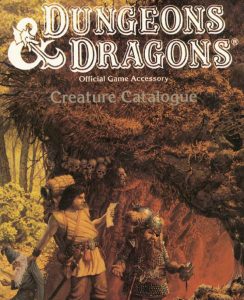
A race of demi-humans often overshadowed in scholarly works focused on the kin of humanity is the race known by the ethereal name Winged Folk, or Al Karak Elam in their native tongue. This obscurity may stem from their elusive nature, which surpasses even that of the elves, as they frequently shroud their existence behind mystical veils of illusion.
Yet a change is on the horizon. After ages marked by detachment from the affairs of humans, a resurgence of the Winged Folk is whispered to be taking place, as they are drawn back into the fabric of human and demi-human interactions. The timing, then, seems ripe for a deeper exploration of this race, which appears poised to assume a more prominent role on the world stage.
This examination shall succinctly cover the history, physical appearance, habitats, socio-political and economic makeup, military structure, and unique features of the Winged Folk race.
The intricacies of their societal structure include specific details about their abilities and ranks. For example, among every group of 20 Winged Folk, one individual will possess fighting skills that are considered above the norm (at 2nd or 3rd level). In a gathering of 30, one can expect to find a member with the abilities of a Magic-User or Illusionist, and another with the skills of a Cleric or Druid, all at 2nd or 3rd level. If one were to encounter a congregation of 50 or more, additional figures would emerge: a dual-talented 4th-level Fighter paired with either a 4th-level Magic-User or Illusionist, and a 4th-level Fighter alongside a 4th-level Cleric or Druid.
Physical Description
Winged folk closely resemble half-elves in appearance, ex-cept that their body structure includes a pair of large, white-feathered wings. They are above average in all abilities (see table below) and can possess extremely high Charisma. (For height, weight and aging, use the half-elf tables, since the two races are similar in these respects.)
The tales of angels told by some legends may have arisen from the widespread use of winged folk as messengers and ambassadors (dressed in the white robes of peace) in the glor-ious days of the High Kings of old when winged folk were more commonly seen among men.
Winged folk typically dress in simple tunics or robes when near their homes. When they hunt, war, or make journeys they will wear leather armor and carry shields. The weapons winged folk normally use are bows, javelins, daggers, spears, swords, axes, bolas, nets, and ropes.
Winged folk may carry up to half their maximum encum-brance in flight with a corresponding slowing of movement (as if fully encumbered) and may carry maximum encumbrance air-borne in an emergency for one or two rounds. They fly as effortlessly as humans walk, needing only occasional rests to keep flying all day.
Winged folk speak with eagles, hawks, falcons, owls, hippogriffs, griffins, and pegasi. They also speak their own language, the common tongue, and the language of elves. When aloft, they can see for great distances like an eagle, and they have night vision equal to an owl's.
Winged folk may be Clerics, Druids, Fighters, Magic-Users, or Illusionists, or certain combinations of two of those classes. They are unlimited in their ability to advance in the Illusionist class (for individuals with sufficiently high abilities), but in other classes may never attain a level higher than 9th. Clerics and high-level Fighters may use maces or other miscellaneous wea-pons, and all higher-level types have normal chances to have psionics and magic items.
More About Winged Folks
Winged folk are very friendly toward elves and half-elves, tolerant of halflings, gnomes, and dwarves (whom they call "diggers") and are usually on good terms with any humans they come in contact with. They detest orcs, gob-lins, and all their kin, but their greatest hatred is reserved for gargoyles. These fierce predators are one of the few types of creatures which can seriously threaten a winged folk village.
Winged folk do not like the underground or the sea, and it is extremely unlikely that any will be encountered in such places. Winged folk who are forced to stay in these environments or are imprisoned must save vs. magic once a day or go insane. Mania, manic-depressive, homicidal mania, suicidal mania, hebephre-nia, and catatonia are the forms of insanity (as defined in the Dungeon Masters Guide) to which the winged folk are susceptible.
Though found nearly anywhere as adventur-ers, mercenaries, hunting parties, or engaged in other such activities, winged folk make their homes only in forests and mountains. They build tree houses in the tallest trees in forests; in the mountains they live in cliff dwellings. Due to the power of the winged folk Illusionists, their homes are often disguised with permanent illusions. Their homes are always open and airy affairs; in many cases only the floors and roofs are permanent with the walls all being simply tent cloth which is used only in inclement weather.






